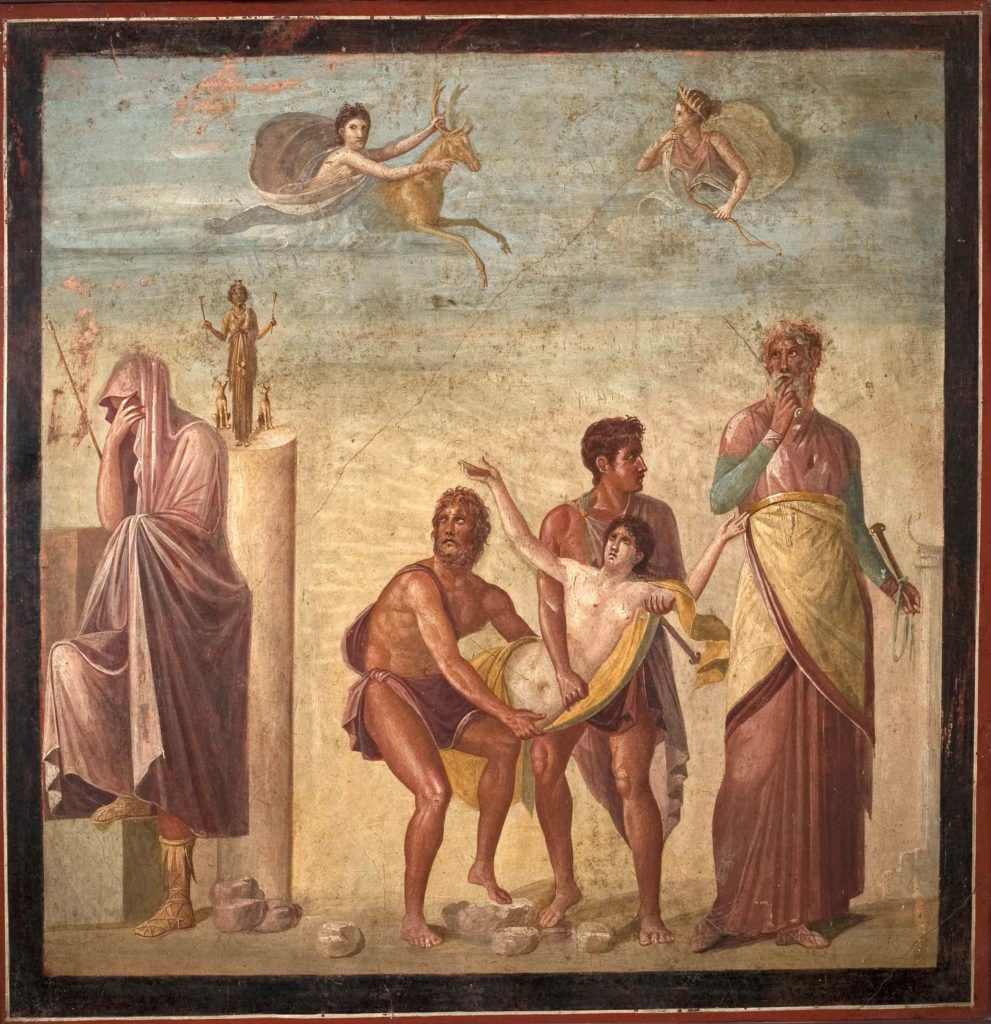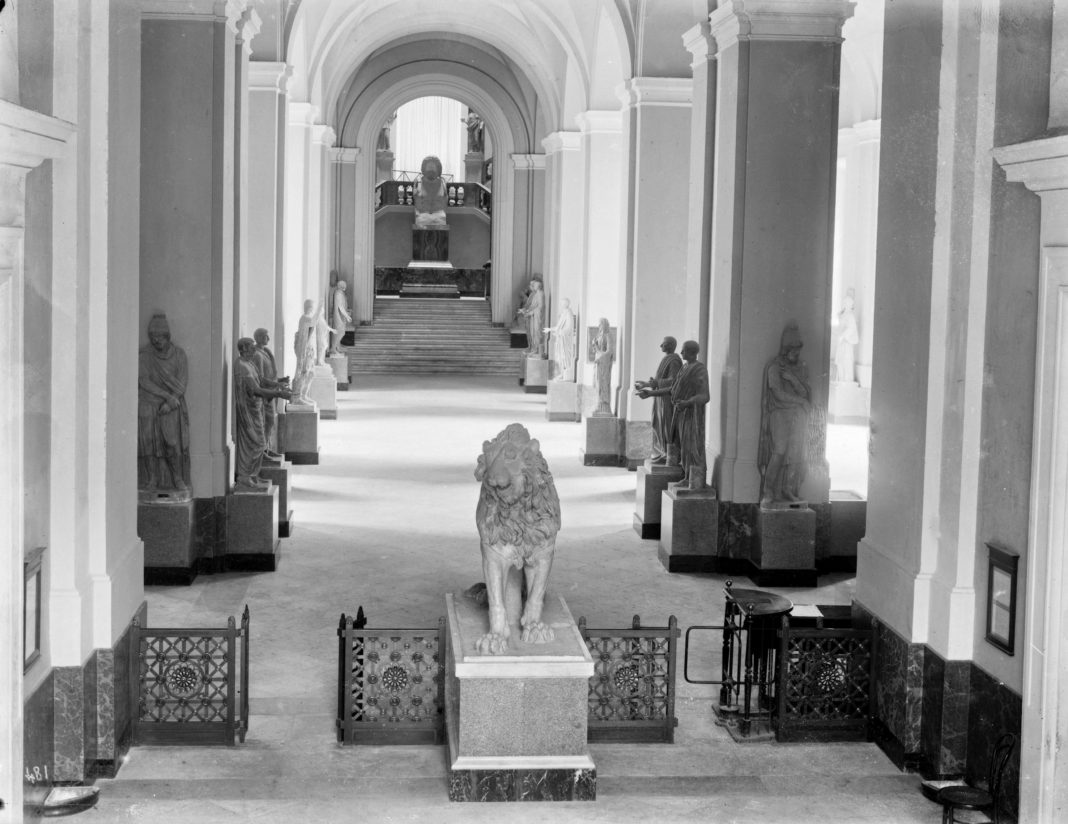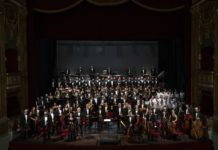Ancora pochi giorni per farsi sorprendere da Picasso nel suo rapporto con l’antichità. Un’esposizione sofisticata (Picasso e l’antico) che fino al 27 agosto accompagnerà chi visita il museo archeologico nazionale di Napoli, svelando l’influsso dell’arte classica su un artista del Novecento che ruppe i ponti con i canoni ottocenteschi per dare vita a una nuova creatività.
L’esposizione è sorprendente perché non propone l’irruzione di uno dei più importanti artisti moderni in un tempio del passato, piuttosto ne sottolinea l’intimo e appassionato dialogo.
Spiega Paolo Giulierini che guida da 8 anni con piglio manageriale e strategico l’antico Palazzo degli Studi da poco decretato Museo di prima fascia, al pari degli Uffizi: «Il Mann partecipa alle celebrazioni internazionali per il cinquantenario della morte di Picasso con una preziosa mostra che parte dal suggestivo racconto della sua celebre visita a Napoli e Pompei nel 1917. Siamo di fronte al più raffinato dialogo mai composto fra i disegni e le opere del Maestro e le statue e gli affreschi delle collezioni Farnese e pompeiane. Nessun museo al mondo poteva costruire una simmetria del genere. L’esposizione ribadisce l’assoluta continuità del pensiero artistico fatto di lasciti e rielaborazioni innovative. Ma soprattutto, lancia un messaggio molto chiaro: ora più che mai l’arte può unire e condannare il lato più deteriore dell’uomo, come già fece Picasso con la celebre Guernica».
Due sono le traiettorie del percorso artistico curato da Clemente Marconi, presentato nelle sale della collezione Farnese: la prima riguarda i soggiorni a Napoli di Picasso calati nell’atmosfera che si respirava nel museo, quando l’artista lo visitò (in foto, l’atrio del Museo archeologico Nazionale di Napoli agli inizi del ‘900 dall’archivio Fotografico del Mann); la seconda, invece, si delinea nel raffronto tra le opere del Museo e quelle del geniale autore spagnolo.
Rilevante, in questa iniziativa, il prestito del British Museum di Londra di 37 delle 100 tavole che compongono la Suite Vollard (dal cognome del mercante d’arte che ebbe un ruolo chiave nel lancio di Picasso artista e che gli commissionò molte opere grafiche).
Alle incisioni, realizzate tra il 1930 e il 1937, si aggiungono lavori provenienti dal Museo Picasso di Parigi e dal Gagosian New York per un insieme di 43 opere che dialogano con le sculture Farnese e i dipinti da Pompei, chiavi di lettura fondamentali nell’itinerario artistico picassiano.
Picasso parte da Parigi in treno il 17 febbraio 1917 con il poeta francese, Jean Cocteau. Destinazione, Roma. Qui arrivano due giorni dopo: Picasso ha accettato l’invito di Cocteau a realizzare scenografia, sipario e costumi per uno spettacolo dei Ballets Russess di Sergej Djagilev, intitolato Parade, che sarebbe stata prodotto quasi tutto nella capitale italiana.
Il pittore di Guernica, suo manifesto contro la guerra, durante questo periodo italiano, va a Napoli due volte, a marzo, ma anche ad aprile, prime di rientrare in Francia e farà tappa a Pompei, oltre che (ovviamente) al Mann, tutti e due per lui immensa fonte d’ispirazione (in particolare le sculture Farnese per il loro gigantismo e la monumentalità tridimensionale, soprattutto l’Ercole).
A Napoli Picasso, che è rimasto a Roma con l’étoile (e sua prima moglie) Olga Cochlova, va perché sollecitato da Cocteau a raggiungerlo. Alla replica di Picasso Sto bene a Roma, e poi c’è il Papa, Cocteau ribatte: Sì, è vero, a Roma c’è il Papa, ma a Napoli c’è Dio.
Chi vuole approfondire il tema della mostra può acquistare il catalogo edito da Electa (pagine 272, 41 euro). L’esposizione, sostenuta dalla Regione Campania, rientra nel progetto internazionale “Picasso Celebration 1973 – 2023: 50 mostre ed eventi per celebrare Picasso” , mezzo secolo dopo la scomparsa. Gran finale in autunno, con un simposio internazionale per l’apertura del Centro studi Picasso a Parigi.
Per saperne di più
mann napoli|museo archeologico nazionale di napoli (mann-napoli.it)

inv. 9112
affresco da Pompei
140 × 130 cm
Napoli, Museo Archeologico Nazionale
Su concessione del Ministero della Cultura
/ Museo Archeologico Nazionale di Napoli,
Archivio fotografico
Exhibition/”Picasso and Antiquity at the Archaeological Museum of Naples: Pompeii and the Farnese sculptures were precious sources of inspiration for the Spanish artist
Only a few days left to be surprised by Picasso in his relationship with antiquity. A sophisticated exhibition (Picasso and the Ancient) will accompany those who visit the National Archaeological Museum in Naples until August 27, revealing the influence of classical art on a 20th century artist who broke the bridges with the canons of the 19th century to give birth to a new creativity.
The exhibition is surprising because it does not propose the intrusion of one of the most important modern artists into a temple of the past, but rather highlights their intimate and passionate dialogue.
Paolo Giulierini, who has been running the ancient Palazzo degli Studi for the past eight years with managerial and strategic flair, recently decreed a first-class museum on a par with the Uffizi: “The man participates in the international celebrations of the 50th anniversary of Picasso’s death with a precious exhibition that begins with the evocative story of his famous visit to Naples and Pompeii in 1917. We are faced with the most beautiful dialog ever composed between the drawings and works of the master and the statues and frescoes of the Farnese and Pompeian collections. No museum in the world could create such a symmetry. The exhibition reaffirms the absolute continuity of artistic thought, made up of legacies and innovative reworkings. But above all, it sends a very clear message: today, more than ever, art can unite and condemn the most repulsive side of man, as Picasso already did with the famous “Guernica”.
The artistic itinerary, curated by Clemente Marconi and presented in the rooms of the Farnese Collection, follows two paths: the first concerns Picasso’s stays in Naples, immersed in the atmosphere of the museum when the artist visited it (in the photo, the atrium of the National Archaeological Museum of Naples in the early 1900s, from the Mann Photographic Archive); the second, on the other hand, is outlined in the comparison between the museum’s works and those of the brilliant Spanish artist.
An important part of this initiative is the loan from the British Museum in London of 37 of the 100 plates that make up the Vollard Suite (named after the art dealer who played a key role in launching Picasso as an artist and who commissioned many graphic works from him).
The engravings, made between 1930 and 1937, are joined by works from the Picasso Museum in Paris and the Gagosian in New York for a series of 43 works that dialog with the Farnese sculptures and paintings of Pompeii, important keys in Picasso’s artistic itinerary.
On February 17, 1917, Picasso left Paris by train with the French poet Jean Cocteau. Their destination was Rome. They arrived there two days later: Picasso had accepted Cocteau’s invitation to design the sets, curtains and costumes for a performance of Sergei Djagilev’s Ballets Russes, entitled Parade, which would be produced almost entirely in the Italian capital.
The painter of Guernica, his anti-war manifesto, went to Naples twice during this Italian period, in March but also in April, before returning to France, and he would stop in Pompeii as well as (of course) in the Mann, both of which were immense sources of inspiration for him (especially the Farnese sculptures for their gigantism and three-dimensional monumentality, especially Hercules).
In Naples, Picasso, who had stayed in Rome with étoile (and his first wife) Olga Cochlova, leaves because Cocteau urges him to join him. To Picasso’s reply, I am well in Rome, and then there is the Pope, Cocteau replied, Yes, it is true, in Rome there is the Pope, but in Naples there is God.
Those who want to know more about the exhibition can buy the catalogue published by Electa (pages 272, 41 euros). The exhibition, supported by the Campania Region, is part of the international project “Picasso Celebration 1973 – 2023: 50 exhibitions and events to celebrate Picasso”, half a century after his death. The grand finale will take place in the fall, with an international symposium to inaugurate the Picasso Study Center in Paris.
Read more at
mann napoli|museo archeologico nazionale di napoli (mann-napoli.it)










